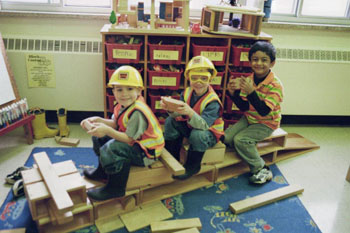Teaching with Dramatized Experience
Dramatized
experiences can range from formal plays, pageants, to less formal tableau,
pantomime, puppets, and role playing.
Plays
depict life, character, or culture, or a combination of all three. They offer
excellent opportunities to portray vividly important ideas about life.

Pageants
are usually community dramas that are based on local history, presented by
local actors. An example is a historical pageant that traces the growth of a
school.

Pantomime
is the art of conveying a story through bodily movements only (Webster’s New
Collegiate Dictionary).

Tableau
(a French word which means picture) is a picture - like scene composed of
people against background. It is often used to celebrate Independence Day,
Christmas and United Nations Day.
Dale
claims that puppets, unlike the regular stage play can present ideas with
extreme simplicity – without elaborate scenery or costume – yet effectively.
Types of Puppets
Rod puppets
- flat cut out figures tacked to a stick, with one or more movable parts, and
operated from below the stage level by wire rods or slender sticks.
Hand puppets
– the puppets head is operated by the forefinger of the puppeteer, the little
finger and thumb are being used to animate the puppet hands.
Making Puppet Theaters
1. Nail
the stick legs to each corner of a wooden crate that has two sides removed.
2. Drape
cloth from the bottom of the box and tack it around sides and front. Operators
crouch behind the theater.
3. You
may also use pieces of plywood, heavy cardboard, or to produce a self –
standing puppet theater.
What Principles
must be observed in choosing a puppet play for teaching?
Dale, (1996)
quoting from the puppeteers of America offers many suggestions, among which are
the following:
·
Do not use puppets for
play that can be done just as well or better by other dramatic means.
·
Puppets plays must be
based on action rather than on words.
·
Keep the play short.
·
Do not omit the
possibilities of music and dancing as part of the puppet show.
·
Adapt the puppet show to
the age, background, and tastes of the students.
Role playing
is an unrehearsed, unprepared and spontaneous, dramatization of a “let’s
pretend” situation where assigned participants are absorbed by their own roles
in the situation described by the teachers.


How is role playing done?
It
can be done by describing a situation which would create different viewpoints
on an issue and then asking the students to play the roles of the individuals
involved. Any kind of conflict situations, real or potential is useful for role
playing or any situation in which real feelings are concealed. Consider
situations in school, at home, on the playground, at work, in government. The
role playing has to be followed by a discussion. Among the questions that may
be asked are:
·
How did you, as actors,
feel? Would you act/think that way in real life?
·
As observers, would you
agree with what the actors said or did?
·
Any lessons learned?



No comments:
Post a Comment